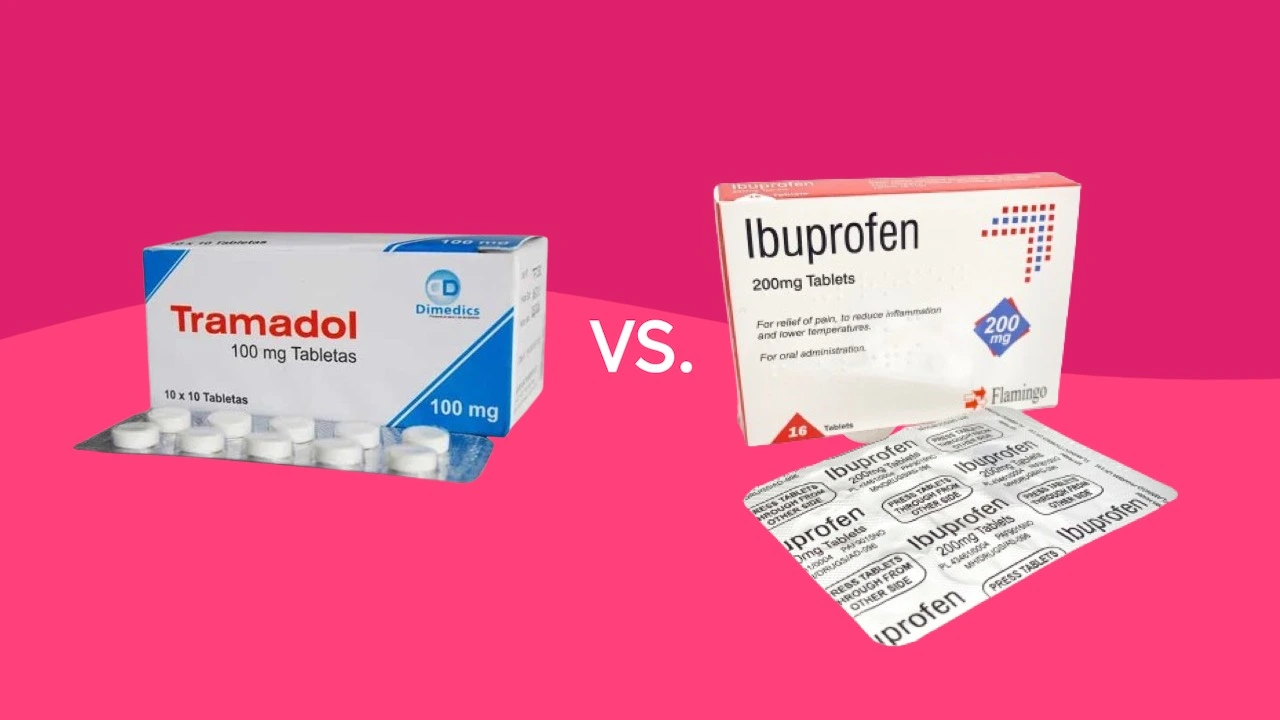combination of tramadol and ibuprofen, While these opioid medications belong to different classes, their unique mechanisms of action and synergistic effects have shown promise in managing various pain conditions. In this article, we will delve into the intricacies of combining tramadol and ibuprofen, exploring their mechanisms of action, potential benefits, and important considerations for safe and effective use.
What is Tramadol ?
Tramadol is a synthetic opioid analgesic that acts on the central nervous system. It works by binding to specific receptors in the brain and spinal cord, altering the perception of pain signals. Additionally, tramadol inhibits the reuptake of neurotransmitters like serotonin and norepinephrine, contributing to its analgesic effects.
What is Ibuprofen?
Ibuprofen, on the other hand, is a nonsteroidal anti-inflammatory drug (NSAID) widely used for pain relief and reducing inflammation. It works by inhibiting the production of prostaglandins, which are chemical messengers involved in the perception of pain and inflammation.
Mechanisms of Action and Synergistic Effects:
The combination of tramadol and ibuprofen offers a unique approach to pain management by targeting different mechanisms of action. While tramadol primarily targets the opioid receptors and neurotransmitter systems, ibuprofen works by reducing inflammation and inhibiting prostaglandin production. By combining these two medications, healthcare professionals can leverage their synergistic effects, potentially providing enhanced pain relief compared to using either medication alone.
Applications and Efficacy:
The tramadol and ibuprofen combination has shown promising results in managing various types of acute and chronic pain conditions. It has been studied for the relief of post-operative relieve pain, musculoskeletal pain, neuropathic pain, and other pain conditions. The synergistic effects of this combination can potentially improve pain management while allowing for lower doses of each individual medication, thereby reducing the risk of adverse reactions.
Side Effects and Precautions:
As with any medication combination, it is essential to be aware of potential side effects and precautions. Common side effects associated with tramadol include nausea, dizziness, constipation, and drowsiness, while ibuprofen may cause gastrointestinal discomfort, increased risk of bleeding, and potential kidney problems, especially with long-term or high-dose use.
It is crucial to carefully consider individual patient factors, such as age, comorbidities, and concomitant medications, when prescribing the tramadol and ibuprofen combination. Patients with a history of gastrointestinal disorders, kidney disease, or bleeding disorders may require additional monitoring and precautions.
Patient Education and Monitoring:
Proper patient education on the appropriate use, storage, and disposal of these medications is crucial for ensuring safe and effective treatment. Patients should be informed about the potential side effects, drug interactions, and the importance of adhering to the prescribed dosage and instructions.
Regular monitoring of patients on the tramadol and ibuprofen combination is recommended to assess pain relief, quality of life, and any potential adverse reactions. Adjustments to the dosage or treatment plan may be necessary based on individual patient responses and tolerance.
Tramadol and Ibuprofen Compression
| Characteristic | Tramadol | Ibuprofen |
| Drug Class | Opioid Analgesic | Non-Steroidal Anti-Inflammatory Drug (NSAID) |
| Mechanism of Action | Binds to opioid receptors and inhibits neurotransmitter reuptake | Inhibits prostaglandin production, reducing inflammation |
| Indications | Moderate to severe pain | Pain relief, fever reduction, anti-inflammatory |
| Common Side Effects | Nausea, dizziness, constipation, drowsiness | Gastric irritation, increased risk of bleeding, kidney problems with long-term use |
| Potential Benefits of Combination | Synergistic effects by targeting different pain pathways, enhanced pain relief with lower individual doses | – |
| Precautions | Monitor for respiratory depression, potential for abuse and dependence | Avoid in patients with active gastric ulcers or bleeding disorders |
| Dosing | Individualized based on patient factors | Typical dose of ibuprofen: 200-800 mg every 4-6 hours, not exceeding 3.2 g/day |
| Where to order? | Buy Tramadol Online Overnight | Out Of Stock |
above table provides a concise overview of tramadol and ibuprofen, highlighting their drug classes, mechanisms of action, indications, common side effects, potential benefits of combining them, and important precautions to consider.
Conclusion:
The combination of tramadol and ibuprofen offers a promising approach to pain management by leveraging the unique mechanisms of action and synergistic effects of these medications. While this combination can potentially provide enhanced pain relief and improve quality of life, it is crucial to be aware of potential side effects, precautions, and patient-specific factors. Healthcare professionals must carefully evaluate each patient’s individual circumstances, weigh the potential benefits and risks, and provide proper education and monitoring to ensure safe and effective use. By understanding the nuances of combining ibuprofen and tramadol, healthcare providers can make informed decisions and personalize pain management strategies for their patients.

